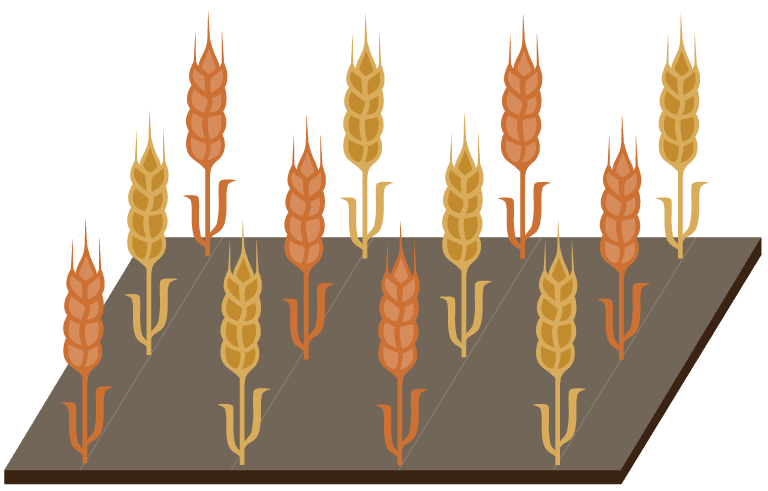SEEDING RATES COUNT
Deliver More Wheat with the right seeding rate!
Still planting in bu/acre?
You could be losing yield
Having the correct wheat seeding rate on your fields can create a huge economic impact to the profitability of your crop. We want to see red wheat be one of the most profitable crops on your farm. That starts with planting the right amount of seed for maximum yield potential.
Proper seeding rates consider planting timing vs optimal time of year, seed size, target population, soil type and much more. Our Seeding rate calculator can help you choose the proper numbers, based on your own needs, and determine the exact amount of wheat seed you will need. You can then re-visit the calculator to determine what your final seed population is with this helpful tool!
GET SERIOUS ABOUT YOUR WHEAT IN ONTARIO, AND DELIVER MORE!
WHY DOES PLANTING THE RIGHT SEEDING RATE MATTER?
Check it out...
Too Much seed can lead to...
We sell seed, but too much seed can have a negative impact on your red wheat crop. We want to see you putting on the proper rate for your field to ensure maximum yield potential and optimum return on investment.
Lodging risk can increase significantly by applying too much seed per acre. Too many plants tend to reach for sunlight quicker and create a longer, thinner stem.
Yield robbing diseases can be brought on with too thick of a plant stand. Having the proper seeding rate can make sure that you get the best yield and disease combo.
Planting too much seed early in the season can lead to excessive top growth in your wheat crop. We all want to enter winter with an ideal wheat stand, but too much can lead to excessive snow mould problems.
Lodging, Disease, Snow Mould, and more can lower your yield significantly. We are aiming for higher yields, which requires you to take care in every part of management. It starts with the right seed source and seed rate for the time of year.


Not Enough Seed can lead to...
An ideal stand of wheat aims for 600 heads per square yard. It costs you more money to create tillers to get there. We think the best route is to have enough seed planted to get their easily, without stressing the plant to create more than it is capable of.
Every year we lose a certain percentage of seeds due to natural mortality and stress of winter. If we plant too few seeds, it is far harder (and costly) to get your stand to an acceptable level to compete with crops like corn and soybeans for Return on Investment.
We want wheat to be competitive financially for you. There are so many benefits of having a rotation that includes wheat. Planting too few seeds can make wheat appear to create less income for your farm.
A thick wheat stand can create enough crop competition to lower the risk of impact and out-compete most weed pressure in a crop. Too few seeds can allow for lower levels of crop competition, allowing weeds to flourish.
The later you plant, the more seeds you will lose to abiotic stress. We want you to plant the right amount of seed for the time of year that you are able to plant. That will be different for every field, region, and variety. You will need to plant more seed in mid October than you will in late September to achieve the same yields.
